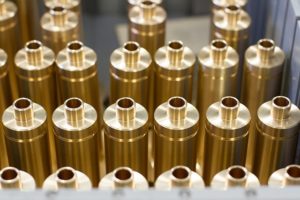If you look around you, you’ll see that most of the things that comprise the modern world are made of any or a combination of three basic materials—plastic, concrete, and metal—of which metal is the oldest. It’s been around for over 10,000 years and still surprises us with its flexibility and inimitability. Even now when the technology that allows us to create stronger and more durable materials already exists, metal is still kicking and won’t be disappearing anytime soon.
One of the oldest metals that is still extensively utilized today is copper. Its amazing properties make it irreplaceable in a wide range of applications. If pure copper doesn’t seem to suffice, you can simply mix it with other metals to form more fitting materials, but certainly no other metal can rival its exquisiteness.
Among the popular alloys of copper are bronze and brass. You’ve probably heard so much about bronze given it is one of the first alloys ever discovered. Brass, however, may sound a little bit unfamiliar. Maybe you’ve also heard about it but not so much to consider using it in your projects. Truth be told, brass is just as valuable as bronze and any major alloy of copper.
What is brass made of?
It is rumored that brass was discovered purely by accident. Zinc-rich ore was accidentally mixed with copper in a cast and then the solidified result turned out to be slightly different from pure copper but is useful in its own rights. Since then, man began producing brass using the same materials.
So, what is brass really made of? Today, brass is made up not just of copper and zinc. Small proportions of other elements, such as arsenic, lead, phosphorus, aluminum, manganese, or silicon, are added to augment its properties. Generally, brass contains 67% copper and 33% zinc. This ratio can be altered to produce a different kind of brass that suits very specific applications.
Characteristics of Brass
Due to brass’s unique composition, it holds many properties. Here are some of the most useful ones:
High Malleability.
Copper gives brass its high malleability. Although bronze has copper, too, it isn’t as malleable as brass due primarily to the difference in their added content. Zinc apparently has less impact on copper’s properties in brass than tin.
Conductivity.
Apart from malleability, copper is also the one responsible for brass’s heat and electrical conductivity. The only metal that’s more conductive than copper is silver, although silver isn’t recommended for conduction applications because of its poor thermal resistance. Brass is then utilized in many applications that require conduction in high temperature environments.
Corrosion Resistance.
Brass is a non-ferrous or non-iron-containing metal. None of brass’s components are. This means it doesn’t corrode via rusting. Some types of brass can even hold up to saltwater, which is ten times more corrosive than fresh water. For this reason, special brasses are used in outer sheathing of ships and dock posts.
Antibacterial Property.
Most non-ferrous metals exhibit an ability to cause the infamous oligodynamic effect, a phenomenon in which metal ions target and kill certain proteins in single-celled organisms. Bacteria can be exterminated within minutes when in contact with any of these metals. As it turns out, brass is one of them. It’s this property that makes brass suitable for filtration and purification systems.
These are only some of the many beneficial properties of brass. What better way to test them than to purchase brass supplies and use them for your projects. Keep in mind, though, that the quality of brass supplies varies widely between suppliers. Make sure to obtain your supplies from a trusted store like Rotax Metals.


